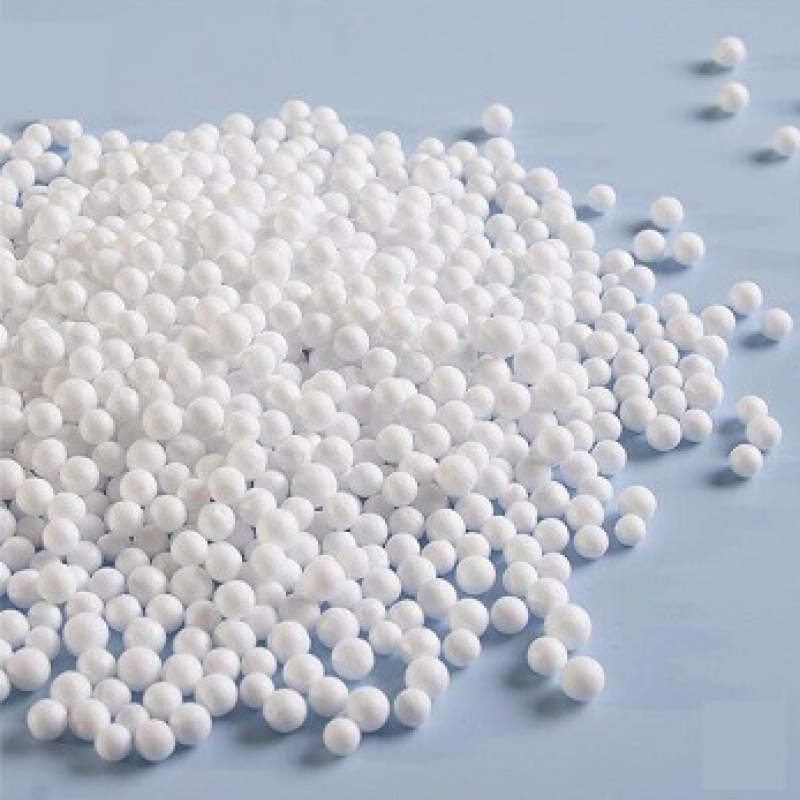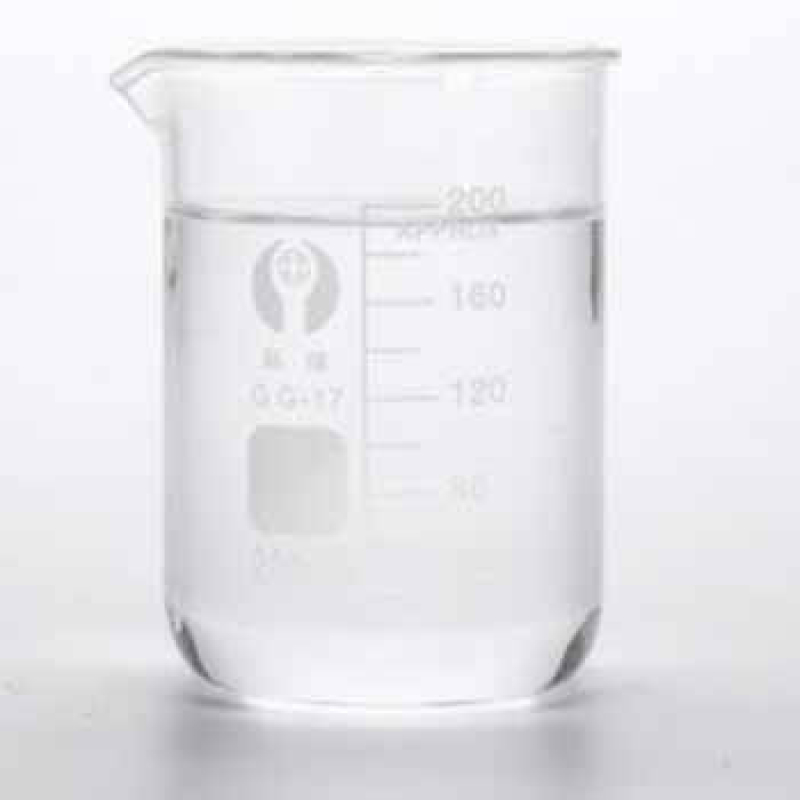Products Description of Erucamide 98% CAS#112-84-5Erucamide is a higher fatty acid amide, one of the important derivatives of erucic acid, and is refined from vegetable oil. It is a waxy, odorless solid, insoluble in water, and has certain solubility in organic solvents such as ketones, esters, alcohols, ethers, and benzene. Because the molecular structure contains a long unsaturated C22 chain and polar amine groups, it has excellent surface polarity, a higher melting point than Chemicalbook and good thermal stability, and can be widely used in place of other similar additives.
Contact Now
Products Description of Lithium Bromide hydrate CAS#85017-82-9Lithium bromide is a highly efficient water vapor absorbent and air humidity regulator. Lithium bromide with a concentration of 54%-55% is used as an absorption refrigerant. In organic chemistry, it is used as a hydrogen chloride remover and an organic fiber (such as wool, hair, etc.) expansion agent. In medicine, it is used as a hypnotic and sedative.
Contact Now
2,3,4,6-Tetra-O-benzyl-D-glucopyranose Chemical PropertiesMelting point 145-149 °C(lit.)Boiling point 672.4±55.0 °C(Predicted)density 1.22±0.1 g/cm3(Predicted)storage temp. Sealed in dry,Store in freezer, under -20°Csolubility Soluble in chloroformpka11.87±0.70(Predicted)form Solidcolor White to Off-Whiteoptical activity[α]20/D +49±2°, c = 2% in dioxaneInChIKeyOGOMAWHSXRDAKZ-BKJHVTENSA-NSMILESOC1O[C@H](COCC2=CC=CC=C2)[C@@H](OCC2=CC=CC=C2)[C@H](OCC2=CC=CC=C2)[C@H]1OCC1=CC=CC=C1CAS DataBase Reference4132-28-9(CAS DataBase Reference)Safety InformationHazard
Contact Now
Products Description of Dimethyl terephthalate CAS#120-61-6Dimethyl terephthalate (DMT) is a key precursor in the production of polyethylene terephthalate (PET), widely recognized for its applications in the manufacturing of plastic bottles, fibers, and films. In academic and industrial R&D, DMT is the subject of innovative research, such as its hydrogenation to dimethyl cyclohexanedicarboxylates (DMCD) using bimetallic catalysts, which has demonstrated an 80% conversion rate and 95% selectivity under optimized conditions 43.
Contact Now
Products Description of Aminopyrazine CAS#5049-61-6Aminopyrazine is the matrix for the four-component synthesis of imidazolidinediones, an organic synthesis intermediate and a pharmaceutical intermediat.Aminopyrazine Chemical PropertiesMelting point 118-120 °C (lit.)Boiling point 167.6°C (rough estimate)density 1.1031 (rough estimate)refractive index 1.5200 (estimate)storage temp. Keep in dark place,Inert atmosphere,Room temperaturesolubility soluble in Methanolpka3.22±0.10(Predicted)form Crystalline Powdercolor Slightly yellow to beigeWater Solubil
Contact Now
Products Description of Monomethylaniline CAS#100-61-8N-methylaniline is the main product in the N-alkyl aromatic amine series and an important intermediate in fine chemicals. Very versatile. my country's first set of production equipment was built with the aid of the former Soviet Union in the 1950s. The products are mainly used to make explosive centralizers and are often used to blend straight-run Chemicalbook gasoline.
Contact Now
Products Description of cocoyl glutamic acid CAS#210357-12-3Colorless transparent liquidFactory and Equipment ShowFast delivery timeInventory 2-3 working days New production 7-10 working days
Contact Now
Products Description of Chromic chloride hexahydrate CAS#10060-12-5Purple monoclinic crystal. Relative density 1.76. Melting point 83℃. Soluble in water, ethanol, slightly soluble in acetone, insoluble in ether. Deliquescent. Toxic!Chromic chloride hexahydrate Chemical PropertiesMelting point 83 °Cdensity 1.76 g/mL at 25 °C(lit.)storage temp. Inert atmosphere,Room Temperaturesolubility Methanol (Slightly), Water (Slightly)form Powder/SolidSpecific Gravity1.76color Reddish-violetPH2.0-3.0Water Solubility Soluble in water and alcohol.
Contact Now
Products Description of Dodecane CAS#112-40-3Colorless liquid. Melting point -9.6℃ (-12℃), boiling point 216.3℃, 145℃ (13.3kPa), 91.5℃ (1.3kPa), relative density 0.7487 (20/4℃), refractive index 1.4216, flash point 71℃.
Contact Now
Products Description of (R)-(-)-3-Carbamoymethyl-5-methylhexanoic acid CAS#181289-33-8(R)-(-)-3-(Carbamoylmethyl)-5-methylhexanoic acid is solid at room temperature and pressure, soluble in dimethyl sulfoxide, N,N-dimethylformamide and other organic solvents; it has poor solubility in ether solvents and can be used as an intermediate in chiral organic synthesis.
Contact Now
Products Description of Calcium Ammonium NitrateCAS#15245-12-2Calcium ammonium nitrate is a nitrogen fertilizer made by melting ammonium nitrate with a certain proportion of limestone and dolomite powder. The ingredients are a mixture of NH4NO3, CaCO3 and MgCO3. Calcium ammonium nitrate contains 21% to 26% nitrogen (N), and is grayish white or light yellow granules or powder. The aqueous solution is weakly alkaline.Calcium ammonium nitrate is the world's most soluble calcium-containing chemical fertilizer.
Contact Now
Products Description of Ethoxyquin CAS#91-53-2Ethoxyquin is abbreviated as EQ or EMQ, also known as ethoxyquin, and its trade names are Sandoquin, Sandoquin, Hupiling, and Ethoxyquin. A yellow to tan viscous liquid with a special odor. Insoluble in water, soluble in benzene, gasoline, ether, alcohol, carbon tetrachloride, acetone and alkyl dichloride Chemicalbook. It is easy to oxidize under natural light. When exposed to air and oxygen, the color becomes dark brown and the viscosity increases. It should be stored in an airtight container away from light.
Contact Now
Products Description of Triethylamine CAS#121-44-8 Triethylamine (molecular formula: C6H15N), also known as N,N-diethylethylamine, is the simplest homotrisubstituted tertiary amine. It has the typical properties of tertiary amines, including salt formation and oxidation. Triethylamine has no reaction in the Hisberg reaction. It is a colorless to light yellow transparent liquid with a strong ammonia odor and a slight smoke in the air. Boiling point: 89.5℃, relative density (water = 1): 0.70, relative density (air = 1): 3.48, slightly soluble in water, soluble in ethanol and ether.
Contact Now
Products Description of 1-Dodecanethiol CAS#112-55-0Colorless or light yellow liquid. Melting point -7℃, boiling point 165-169℃ (5.19kPa), 142-145℃ (2kPa), relative density 0.8450 (20/20℃), refractive index 1.4589, flash point 87℃.
Contact Now
Products Description of Myristoyl chloride CAS#112-64-1Prepared by the reaction of myristic acid and phosphorus trichlorideMyristoyl chloride Chemical PropertiesMelting point -1 °C (lit.)Boiling point 250 °C/100 mmHg (lit.)density 0.908 g/mL at 25 °C (lit.)refractive index n20/D 1.449(lit.)Fp >230 °Fstorage temp. −20°Cform Liquidcolor Clear colorless to light yellow-brownWater Solubility MAY DECOMPOSEBRN 636924InChIKeyLPWCRLGKYWVLHQ-UHFFFAOYSA-NCAS DataBase Reference112-64-1(CAS DataBase Reference)NIST Chemistry ReferenceMyris
Contact Now
Products Description of D-(-)-ERYTHROSE CAS#583-50-6D-erythrose-4-phosphate is an intermediate in the enzymatic conversion of carbohydrates.D-(-)-ERYTHROSE Chemical PropertiesMelting point <25℃Boiling point 144.07°C (rough estimate)alpha D20 +1° -14.5° (3 days, c = 11)density 1.0500 (rough estimate)refractive index 1.498storage temp. 2-8°Csolubility Methanol, Waterform syruppka12.49±0.20(Predicted)color light yellowWater Solubility Fully miscible in water.Sensitive HygroscopicMerck 14,3690BRN 1721698CAS DataBase Reference
Contact Now
Products Description of 2-bromo-3-methylpropiophenone CAS#1451-83-8White powder2-bromo-3-methylpropiophenone Chemical PropertiesBoiling point 134-135 °C(Press: 8 Torr)density 1.357±0.06 g/cm3(Predicted)InChIInChI=1S/C10H11BrO/c1-7-4-3-5-9(6-7)10(12)8(2)11/h3-6,8H,1-2H3InChIKeyQGGNDYQVUDZPJB-UHFFFAOYSA-NSMILESC(C1=CC=CC(C)=C1)(=O)C(Br)C Factory and Equipment ShowFast delivery timeInventory 2-3 working days New production 7-10 working days
Contact Now
Products Description of Pyridazin-3-Amine CAS#5469-70-5Pyridazine-3-amine appears as a white or off-white solid powder at room temperature and pressure. It is a commercial drug molecule and organic synthesis intermediate. It can be used as a molecular skeleton to participate in the synthesis of drug molecules and bioactive molecules.
Contact Now
Products Description of TRIDECETH-4 CAS#69011-36-5Condensation products of isomeric alcohol and ethylene oxideTRIDECETH-4 Chemical PropertiesBoiling point 290℃[at 101 325 Pa]density 0.907[at 20℃]vapor pressure 0.007Pa at 20℃Water Solubility 56mg/L at 20℃LogP4.73 at 25℃EPA Substance Registry SystemPolyethylene glycol mono(branched tridecyl) ether (69011-36-5) Safety InformationRIDADR 3082HazardClass 9PackingGroup IIIProduct Application of TRIDECETH-4 CAS#69011-36-5Isomeric alcohol ether E-1300 products are easily dispersed or soluble in water, a
Contact Now
Products Description of Tetraethylammonium Chloride CAS#56-34-8 Tetraethylammonium chloride is an organic compound with the chemical formula C8H20ClN.
Contact Now
roducts Description of Sodium Monohydrate CAS#10039-56-2Sodium hypophosphite, also known as "sodium dihydrogen hypophosphite" and "sodium hypophosphite", has the chemical formula NaH2PO2. It is a colorless crystal or a pearly crystal or a granular powder. It is soluble in water, alcohol and glycerin, but insoluble in ether. It is easy to deliquesce. It is relatively stable when stored in a dry state. When heated above 200°C, it will decompose rapidly, releasing phosphine, a toxic gas that can self-ignite.
Contact Now
Products Description of Lead acetate trihydrate CAS#6080-56-4 Lead acetate trihydrate is colorless crystal, white granule or powder, which is deliquescent. It is easily soluble in water and has a sweet taste.
Contact Now
Products Description of (R)-(-)-2-Methylpiperazine CAS#75336-86-6 White to light yellow crystalline solid.
Contact Now
Products Description of Polyvinylpyrrolidone CAS#9003-39-8Polyvinylpyrrolidone, abbreviated as PVP, is a polymer of vinylpyrrolidone. Due to its different degree of polymerization, it is divided into soluble PVP and insoluble PVPP (polyvinylpolypyrrolidone). The relative molecular mass of soluble PVP is 8000-10000. It can be used as a precipitant and precipitate with polyphenols. With this method, it is easy for residual PVP to remain in the wine.
Contact Now


































